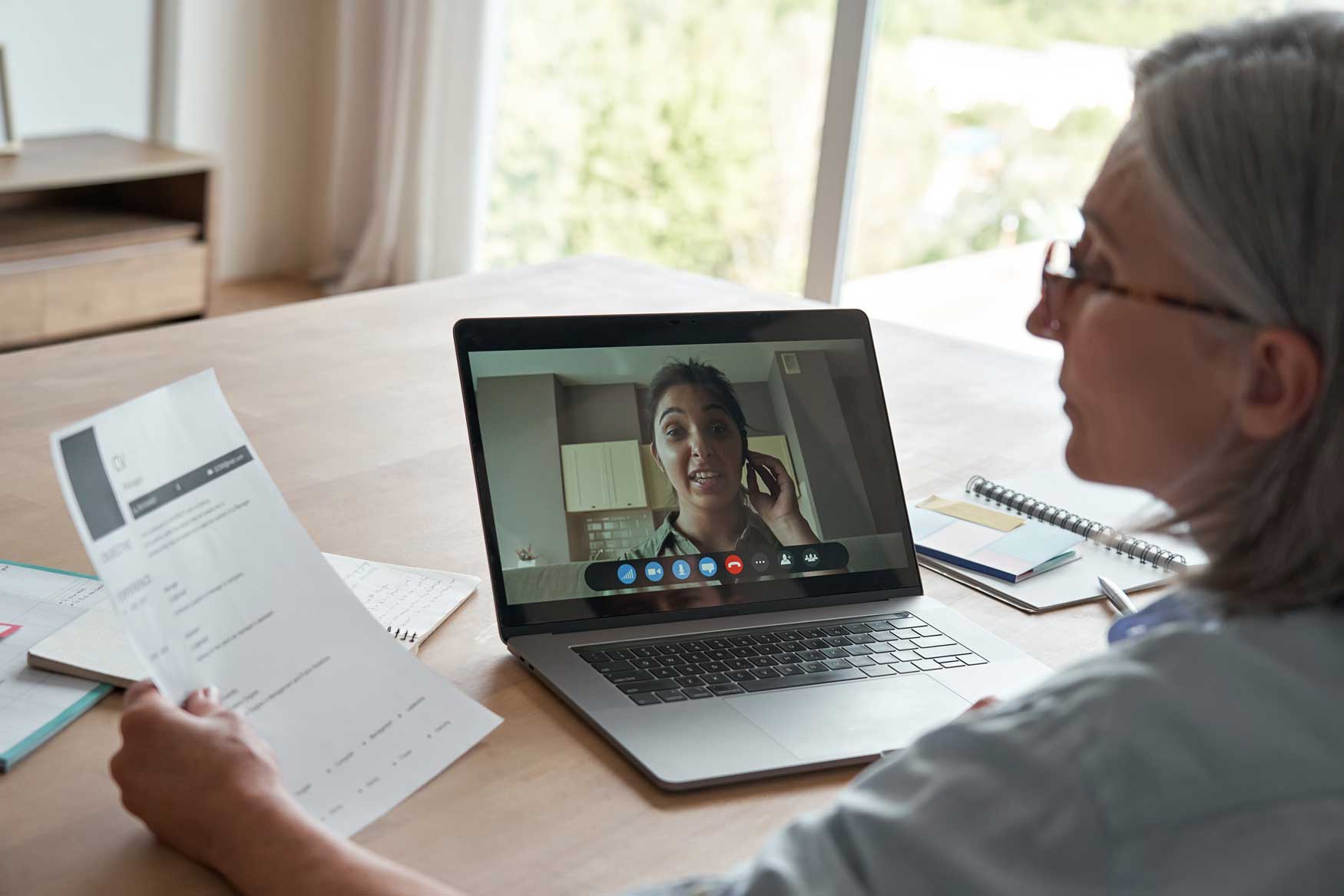Remote work is here to stay — in some form — for many of us, which means virtual interviews will become commonplace as well. However, virtual interviews come with their own set of challenges — and in this blog, I give a few tips to ensure virtual interview success.
Test out the tech, and set up your space.
Even if you’re familiar with the meeting technology, test your camera and microphone ahead of time — and use this as an opportunity to assess your lighting, background, and where you are in the frame. Choose an area that is tidy and free of clutter. If possible, set up your interview space facing a window with an abundance of natural light.
Practice positioning and eye contact.
Make sure your head and shoulders are centered in the window frame — if your head is cut off anywhere on the screen, you’re too close, and if your entire torso is in view, you’re too far away. Maintaining eye contact is especially challenging during virtual interviews, so move the interview window as close to the camera lens as possible and practice looking into your computer camera when you speak.
Plan to dress like you would for an in-person interview.
Appearances are still important in a virtual environment. Plan — and try on — your wardrobe ahead of time, choosing clothing and accessories that make you feel great and fit comfortably (fidgeting with your outfit will distract both you and the person you’re speaking with!). Computer cameras can distort bright colors and busy patterns, so stick with solid colors and minimal jewelry and accessories.
Plug your tech in.
It sounds obvious, which is why it’s often missed — always make sure that the technology you’re using to conduct the interview is powered up and ready to go. This includes not only your computer, but any device — like a tablet or phone — you’d be using as a backup in case something goes haywire.
Get yourself motivated.
An in-person job interview usually means travel time — and with it, a few minutes to pump yourself up by listening to your favorite song, or calming yourself through a few minutes of quiet reflection. Weave those same practices into your at-home interviewing — those moments you take for yourself can make all the difference.
Ask about a backup plan.
Technology — and internet service — seems to have a way of failing right when we need it the most. Before you dive in, ask your interviewer(s) about an alternate plan for the interview in case something happens. Not only does this help you avoid several minutes of wasted interview time, but it also showcases your proactive approach and attention to detail.
Pay attention to your speaking and posture.
Sitting up straight has the same effect virtually as it does in person — it shows you’re confident and engaged. Test the volume and clarity of your voice at the beginning of the call by asking if everyone can hear you. And, because delays can happen, communicate that you might wait a few seconds to respond to a question as you don’t want to inadvertently interrupt anyone.





